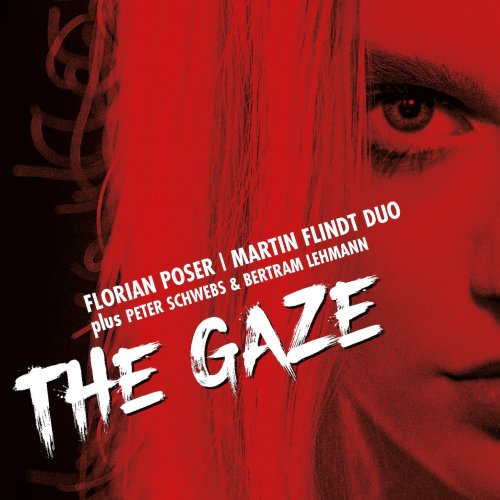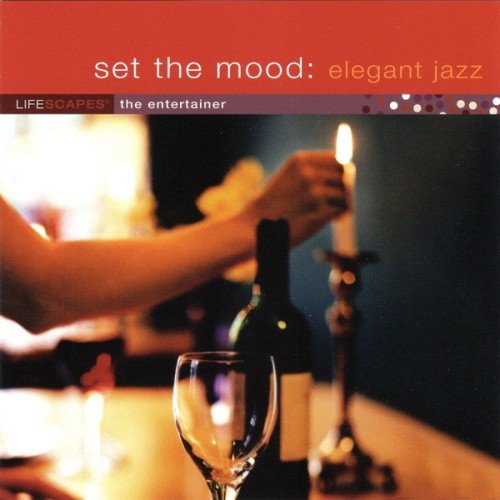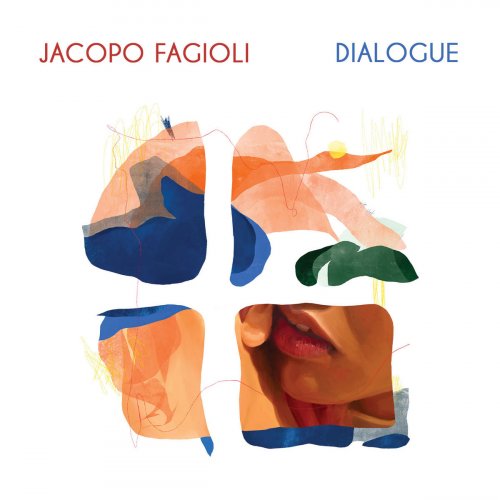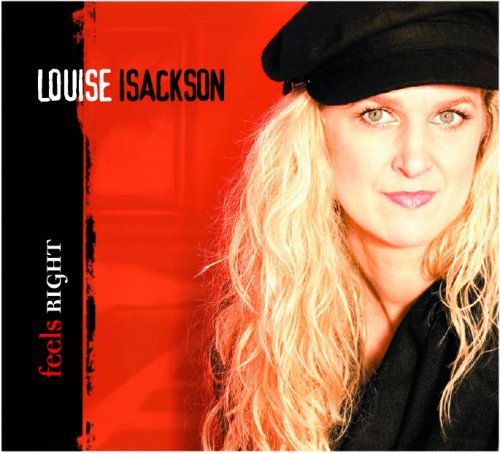Camerata Köln - Telemann: 6 Trios (2004)
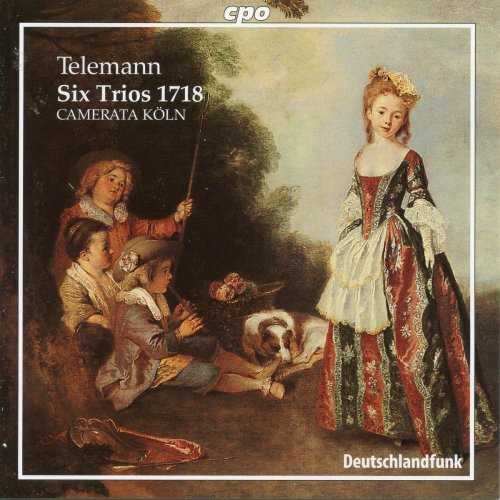
Artist: Camerata Köln
Title: Telemann: 6 Trios
Year Of Release: 2004
Label: CPO
Genre: Classical
Quality: FLAC (tracks)
Total Time: 52:17 min
Total Size: 299 MB
WebSite: Album Preview
Tracklist:Title: Telemann: 6 Trios
Year Of Release: 2004
Label: CPO
Genre: Classical
Quality: FLAC (tracks)
Total Time: 52:17 min
Total Size: 299 MB
WebSite: Album Preview
01. Trio Sonata No. 1 in B-Flat Major, TWV 42:B1: I. Vivace
02. Trio Sonata No. 1 in B-Flat Major, TWV 42:B1: II. Siciliana
03. Trio Sonata No. 1 in B-Flat Major, TWV 42:B1: III. Allegro
04. Trio Sonata in A Minor, TWV 42:a1: I. Affettuoso
05. Trio Sonata in A Minor, TWV 42:a1: II. Vivace
06. Trio Sonata in A Minor, TWV 42:a1: III. Grave
07. Trio Sonata in A Minor, TWV 42:a1: IV. Menuet - Trio
08. Trio Sonata No. 3 in G Major, TWV 42:G1: I. Affettuoso
09. Trio Sonata No. 3 in G Major, TWV 42:G1: II. Vivace
10. Trio Sonata No. 3 in G Major, TWV 42:G1: III. Largo
11. Trio Sonata No. 3 in G Major, TWV 42:G1: IV. Vivace
12. Trio Sonata No. 4 in D Major, TWV 42:D1: I. Soave
13. Trio Sonata No. 4 in D Major, TWV 42:D1: II. Vivace
14. Trio Sonata No. 4 in D Major, TWV 42:D1: III. Grave
15. Trio Sonata No. 4 in D Major, TWV 42:D1: IV. Presto
16. Trio Sonata No. 5 in G Minor, TWV 42:g1: I. Adagio
17. Trio Sonata No. 5 in G Minor, TWV 42:g1: II. Vivace
18. Trio Sonata No. 5 in G Minor, TWV 42:g1: III. Adagio
19. Trio Sonata No. 5 in G Minor, TWV 42:g1: IV. Allegro
20. 6 Trios, Trio in F Major, TWV 42:F1: I. Allegro
21. 6 Trios, Trio in F Major, TWV 42:F1: II. Soave
22. 6 Trios, Trio in F Major, TWV 42:F1: III. Presto
Telemann was a prolific composer for almost any kind of instrument in any kind of scoring. The set of six trios recorded here belongs to a group of four collections which were published during Telemann's years in Frankfurt (1712-1721), where he was active both as city music director as well as Kapellmeister of the Barfüsserkirche. Soon after he arrived in Frankfurt he founded a Collegium Musicum, just as he had done in Leipzig before. The members of the ensemble came from the middle class as well as patrician circles, some of whom had considerable technical skills.
To the group of collections written during the Frankfurt years belong the six partitas which form the 'Cleine Cammer-Musik' of 1716. This set and the 'Six Trios' of 1718 are different in two respects. The Trios are technically more demanding than the Partitas, and whereas the scoring of the Partitas is left to the performers, in the Six Trios Telemann specifies the instruments for which they are written. Only in the sixth trio Telemann offers an alternative for the third melody instrument: either cello or bassoon. This means that Telemann was more able to exploit the specific character of the respective instruments. It is quite possible this collection also reflects the educational ideal of the enlightenment as Telemann expressed in the preface of 'Der getreue Music-Meister' (1728-29), where he wrote that the function of music is "to serve one’s neighbour".
The Six Trios are structured symmetrically: the first and last are in three movements, the four in between are of the sonata da chiesa type and consist of a sequence of four movements: slow - fast - slow - fast. Apart from that the second and fifth are in minor keys, the other in major.
In many of the movements the instruments swap roles: first one of the instruments takes the lead, while the other is taking a back seat, and then vice versa. In most sonatas there is a pretty strong contrast between the individual movements. A good example is the Trio III, which starts with a very moving 'affettuoso', which is followed by a lively vivace, an expressive adagio and another sparkling vivace. Interesting is also the Trio II, which ends with a pair of minuets the second of which is for recorder and violin only, with the basso continuo being silent.
The members of Camerata Köln are very experienced performers of this kind of repertoire, and therefore it doesn't surprise that the interpretations on this disc are very good. The affect and the many rhetorical figures of these trios are done full justice by the strongly gestural playing of Camerata Köln. The phrasing and articulation are natural and follow the musical logic. The tempi are well chosen, and there is a very good balance between the instruments, even where the violin could easily dominate its partner, in particular the viola da gamba and the cello in the fifth and sixth trio respectively. I only wish the players would have been a little more generous in the use of ornamentation.
This recording has been released in the year of Camerata Köln's 25th anniversary. Congratulations and many happy returns!
Johan van Veen
To the group of collections written during the Frankfurt years belong the six partitas which form the 'Cleine Cammer-Musik' of 1716. This set and the 'Six Trios' of 1718 are different in two respects. The Trios are technically more demanding than the Partitas, and whereas the scoring of the Partitas is left to the performers, in the Six Trios Telemann specifies the instruments for which they are written. Only in the sixth trio Telemann offers an alternative for the third melody instrument: either cello or bassoon. This means that Telemann was more able to exploit the specific character of the respective instruments. It is quite possible this collection also reflects the educational ideal of the enlightenment as Telemann expressed in the preface of 'Der getreue Music-Meister' (1728-29), where he wrote that the function of music is "to serve one’s neighbour".
The Six Trios are structured symmetrically: the first and last are in three movements, the four in between are of the sonata da chiesa type and consist of a sequence of four movements: slow - fast - slow - fast. Apart from that the second and fifth are in minor keys, the other in major.
In many of the movements the instruments swap roles: first one of the instruments takes the lead, while the other is taking a back seat, and then vice versa. In most sonatas there is a pretty strong contrast between the individual movements. A good example is the Trio III, which starts with a very moving 'affettuoso', which is followed by a lively vivace, an expressive adagio and another sparkling vivace. Interesting is also the Trio II, which ends with a pair of minuets the second of which is for recorder and violin only, with the basso continuo being silent.
The members of Camerata Köln are very experienced performers of this kind of repertoire, and therefore it doesn't surprise that the interpretations on this disc are very good. The affect and the many rhetorical figures of these trios are done full justice by the strongly gestural playing of Camerata Köln. The phrasing and articulation are natural and follow the musical logic. The tempi are well chosen, and there is a very good balance between the instruments, even where the violin could easily dominate its partner, in particular the viola da gamba and the cello in the fifth and sixth trio respectively. I only wish the players would have been a little more generous in the use of ornamentation.
This recording has been released in the year of Camerata Köln's 25th anniversary. Congratulations and many happy returns!
Johan van Veen
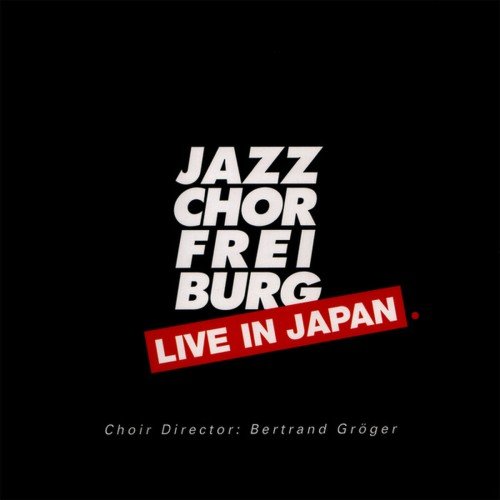
![Marju Kuut - Marju Kuut: Üksi, kuid vabana (2025) [Hi-Res] Marju Kuut - Marju Kuut: Üksi, kuid vabana (2025) [Hi-Res]](https://www.dibpic.com/uploads/posts/2025-12/1765641100_cover.jpg)

